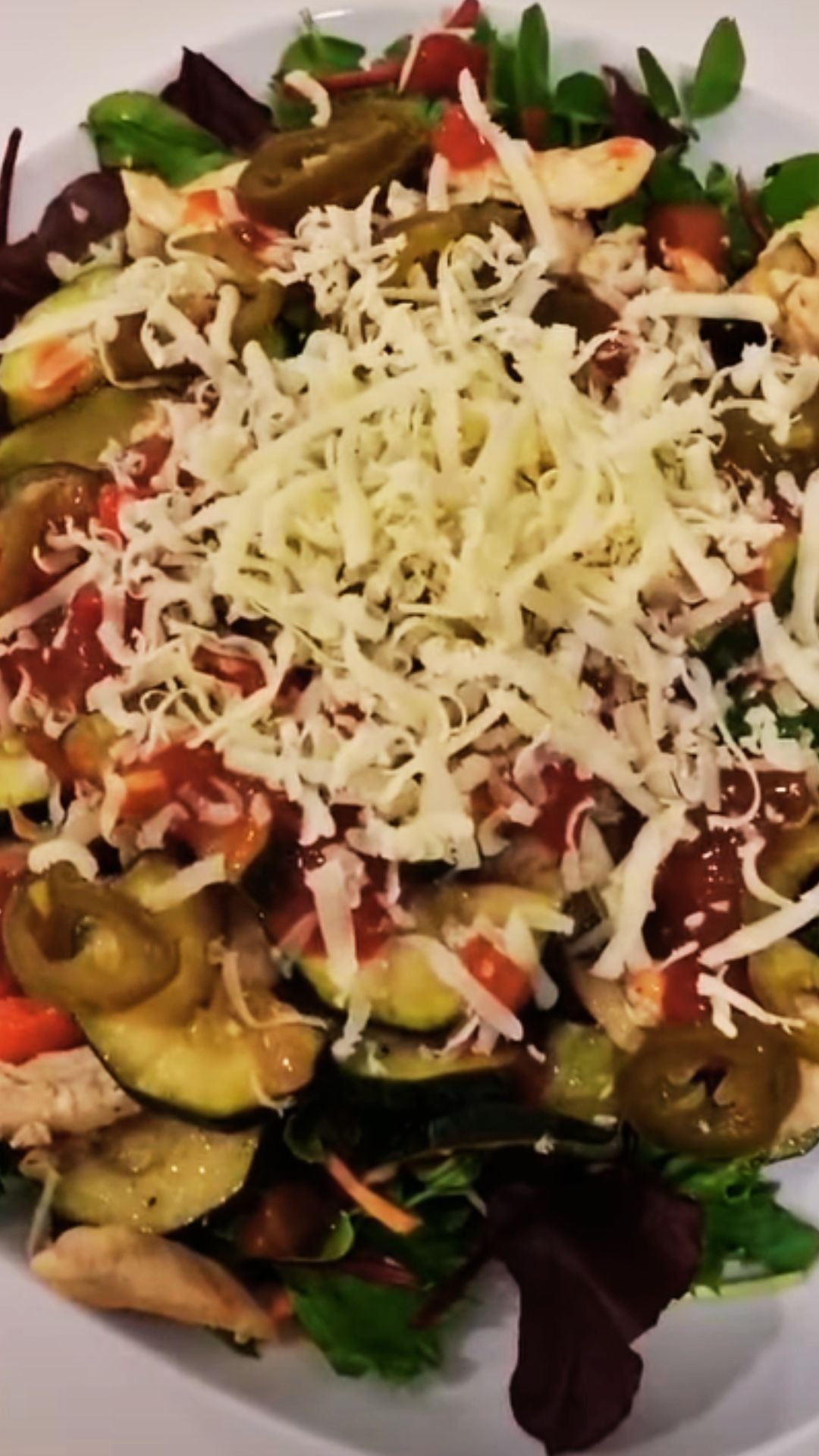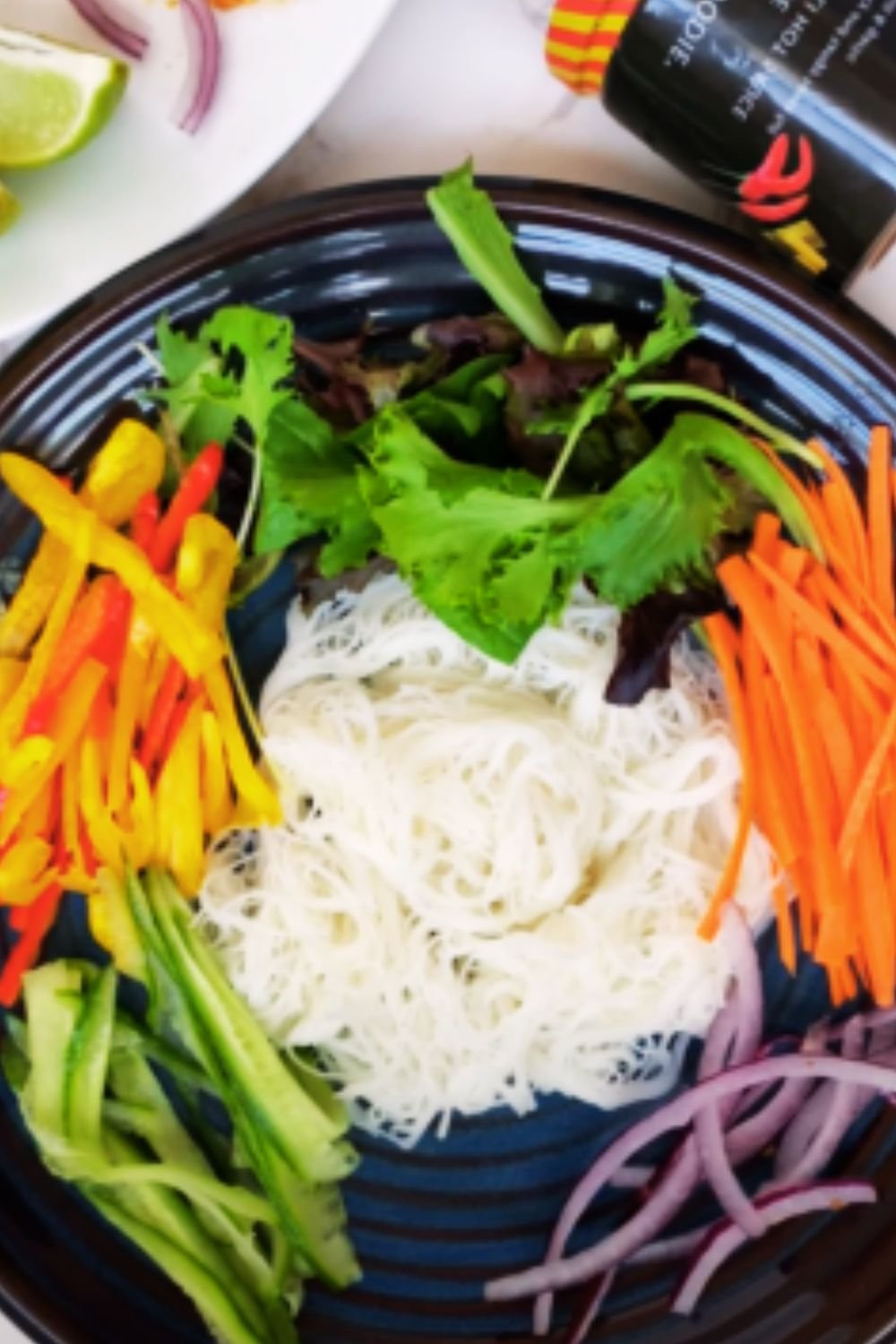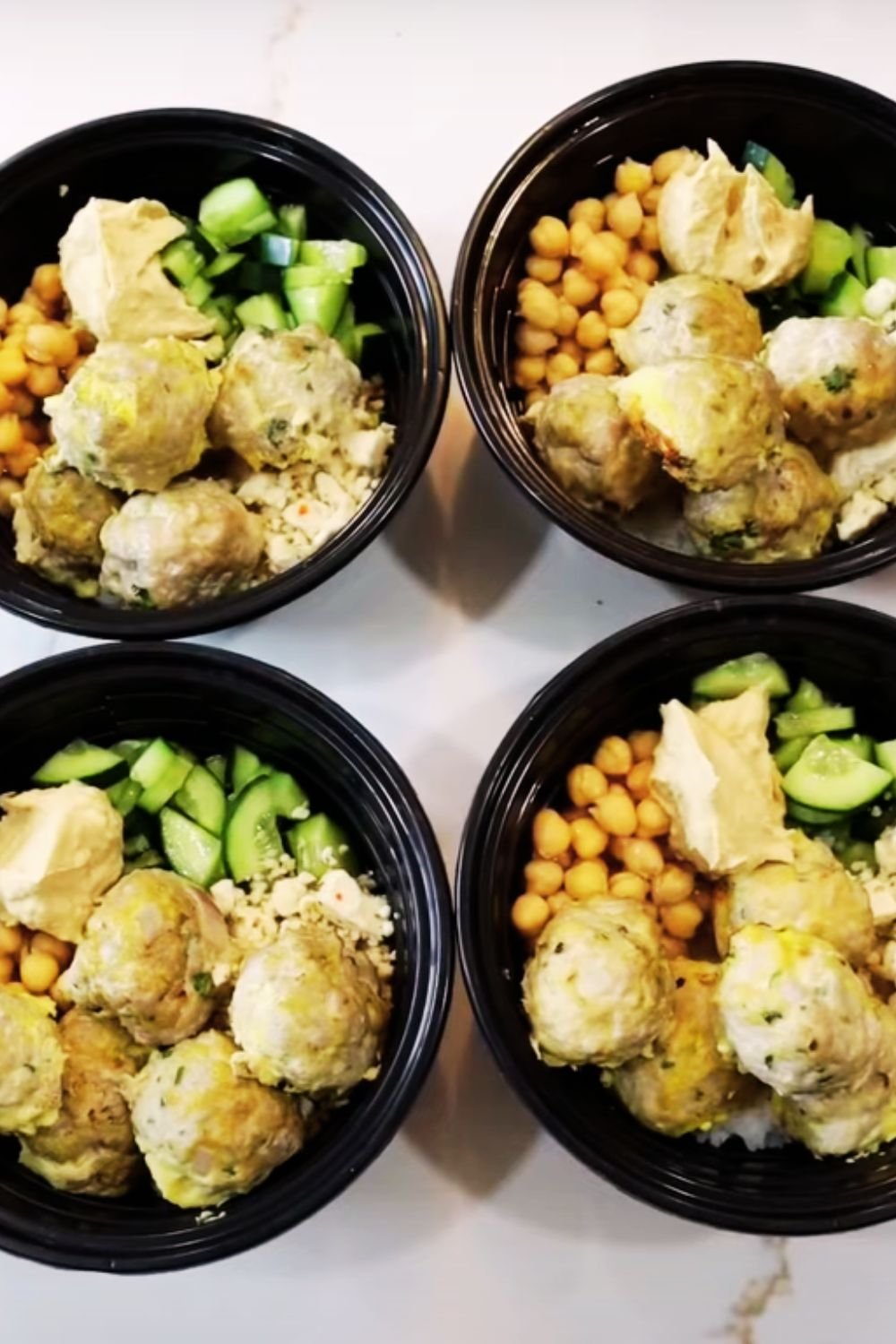There’s something magical about the way Mexican cuisine transforms simple ingredients into flavor explosions. Today, I’m sharing one of my absolute favorite dishes that exemplifies this culinary alchemy: Ensalada de Pollo, or Mexican Chicken Salad. Unlike its American counterpart, this isn’t your typical mayo-heavy chicken salad. Instead, it’s a vibrant, colorful celebration of fresh vegetables, tender chicken, and zesty seasonings that dance together in perfect harmony.
My love affair with Ensalada de Pollo began during my first trip to Oaxaca. I was wandering through a local market when I spotted vendors selling plastic cups filled with this colorful mixture. One bite, and I was hooked. The combination of tender chicken, crisp vegetables, and bright citrus dressing was unlike anything I’d tasted before. I immediately knew I had to learn how to recreate this dish in my own kitchen.
What makes this salad special isn’t just its incredible flavor profile, but its versatility. You can serve it as a light lunch, a refreshing dinner on hot summer nights, or as a show-stopping party appetizer. It’s both nutritious and satisfying, offering a perfect balance of protein, vegetables, and healthy fats.
In this comprehensive guide, I’ll walk you through everything you need to know about creating an authentic Ensalada de Pollo, from selecting the freshest ingredients to mastering the perfect balance of flavors. I’ll also share some regional variations and serving suggestions that will help you customize this dish to your preferences. Let’s embark on this delicious culinary journey together!
The Origins and Cultural Significance
Ensalada de Pollo holds a special place in Mexican family gatherings and celebrations. This colorful dish is often found at birthday parties, holiday celebrations, and weekend family meals. What I find fascinating is how each region in Mexico has its own variation, reflecting local ingredients and taste preferences.
In coastal regions, you might find the salad incorporating seafood alongside chicken. In central Mexico, the addition of fruits like apples and grapes is common, while northern regions might include more cheese and perhaps some regional chiles. Despite these variations, the essence remains the same: a refreshing, protein-rich salad that brings people together.
The dish also tells a story of resourcefulness. Traditional Mexican cooking has always excelled at transforming leftover ingredients into something new and exciting. Ensalada de Pollo became a practical way to use leftover roasted chicken from Sunday dinner, combining it with fresh vegetables to create a completely different meal for Monday lunch.
What I particularly love about this dish is how it reflects the Mexican approach to food – vibrant, communal, and made with care. Nothing goes to waste, and every meal is an opportunity to bring flavor and joy to the table.
Essential Ingredients
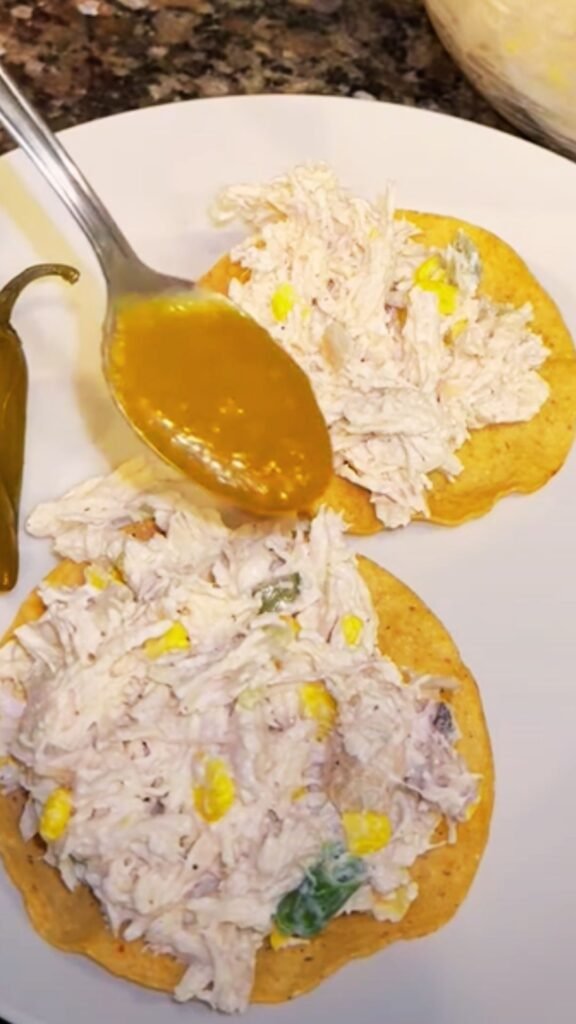
The beauty of Ensalada de Pollo lies in its fresh, quality ingredients. Here’s what you’ll need to create an authentic version:
Primary Ingredients:
- Chicken: The star of the show, providing protein and substance.
- Vegetables: Creating color, texture, and nutritional value.
- Dressing: Binding everything together with bright, zesty flavors.
- Garnishes: Adding final touches of flavor and visual appeal.
Let’s break these down in detail:
Chicken
For the most flavorful result, I prefer using bone-in, skin-on chicken breasts that I cook specifically for this salad. The poaching liquid becomes infused with aromatics that flavor the meat beautifully. However, rotisserie chicken works wonderfully as a time-saving alternative, and it’s what many Mexican families use for quick preparation.
Vegetables
The vegetable combination is where this salad truly shines:
- Carrots: Provide sweetness and crunch
- Potatoes: Add substance and absorb flavors
- Peas: Offer a pop of color and subtle sweetness
- Corn kernels: Bring natural sweetness and Mexican character
- Bell peppers: Contribute vibrant color and vitamin C
- Onions: Add essential aromatic punch (red onions are milder and prettier)
- Jalapeños or serrano peppers: Deliver that quintessential Mexican heat (optional but recommended)
- Tomatoes: Contribute acidity and freshness
- Avocado: Adds creaminess and healthy fats
Dressing Elements
The dressing is typically lighter than American chicken salads:
- Lime juice: Essential for authentic Mexican flavor
- Mexican crema or sour cream: Just enough for creaminess without heaviness
- Olive oil: For silkiness and flavor
- Dijon mustard: Adds depth and helps emulsify the dressing
- Cilantro: Provides that distinctive Mexican freshness
- Mexican oregano: Offers earthy notes different from Mediterranean oregano
- Cumin: Adds warm, earthy undertones
Garnishes
These final touches elevate the dish:
- Additional cilantro: For freshness and visual appeal
- Cotija cheese: Adds saltiness and authentic Mexican character
- Pepitas (pumpkin seeds): Provide crunch and nutritional value
- Radishes: Offer peppery crunch and beautiful color contrast
- Lime wedges: Allow guests to add extra brightness to taste
Ingredient Quality Considerations
I’ve learned through much experimentation that ingredient quality makes a tremendous difference in this salad. Here are my key recommendations:
- Chicken: If possible, use organic, free-range chicken. The flavor is noticeably better.
- Vegetables: Seasonal, fresh vegetables will always provide the best texture and flavor. Frozen peas are an exception – they’re often better than fresh as they’re frozen at peak ripeness.
- Herbs and Seasonings: Fresh herbs are non-negotiable for this recipe. The difference between fresh and dried cilantro is night and day.
- Lime Juice: Always use freshly squeezed. Bottled lime juice lacks the vibrant flavor essential to this dish.
- Mexican Oregano: If possible, seek out true Mexican oregano rather than Mediterranean. The flavor profile is distinctly different, with Mexican oregano having citrus and earthy notes that complement this dish perfectly.
Traditional Recipe
Ingredients (Serves a family dinner)
For the chicken:
- 3 large chicken breasts (approximately 2 pounds)
- 1 white onion, halved
- 3 garlic cloves, smashed
- 2 bay leaves
- 1 tablespoon salt
- 2 teaspoons black peppercorns
- Water to cover
For the vegetables:
- 3 medium carrots, diced small (about 1 cup)
- 2 medium potatoes, diced small (about 2 cups)
- 1 cup frozen peas, thawed
- 1 cup corn kernels (fresh or frozen)
- 1 red bell pepper, finely diced
- 1/2 red onion, finely diced
- 1-2 jalapeños, seeded and minced (optional)
- 2 medium tomatoes, seeded and diced
- 1 large avocado, diced (add just before serving)
For the dressing:
- 1/4 cup fresh lime juice (from about 2-3 limes)
- 3 tablespoons Mexican crema or sour cream
- 2 tablespoons olive oil
- 1 teaspoon Dijon mustard
- 1/4 cup finely chopped cilantro
- 1 teaspoon Mexican oregano
- 1/2 teaspoon ground cumin
- Salt and freshly ground black pepper to taste
For garnish:
- Extra cilantro leaves
- 1/4 cup crumbled Cotija cheese
- 2 tablespoons toasted pepitas
- Thinly sliced radishes
- Lime wedges
Preparation Method
Step 1: Cook the Chicken
- Place chicken breasts in a large pot with onion, garlic, bay leaves, salt, and peppercorns.
- Cover with cold water by about 1 inch.
- Bring to a gentle boil, then reduce heat to maintain a simmer.
- Cook until chicken reaches an internal temperature of 165°F (about 15-20 minutes).
- Remove chicken and let cool. Reserve broth for cooking vegetables or other uses.
- Once cool enough to handle, shred or dice the chicken into bite-sized pieces.
Step 2: Prepare the Vegetables
- In a pot of salted water, cook diced potatoes until just tender (about 8-10 minutes). Drain and cool.
- In the same water, cook diced carrots until tender-crisp (about 5-7 minutes). Drain and cool.
- If using fresh corn, blanch the kernels for 1-2 minutes. If using frozen, thaw completely.
- Combine cooled potatoes, carrots, peas, corn, bell pepper, red onion, jalapeño (if using), and tomatoes in a large bowl.
Step 3: Make the Dressing
- In a small bowl, whisk together lime juice, Mexican crema, olive oil, and Dijon mustard until smooth.
- Stir in chopped cilantro, Mexican oregano, and cumin.
- Season with salt and freshly ground black pepper to taste.
Step 4: Assemble the Salad
- Gently fold the shredded chicken into the vegetable mixture.
- Pour the dressing over the chicken and vegetables, and toss gently to combine.
- Cover and refrigerate for at least 30 minutes (or up to 4 hours) to allow flavors to meld.
- Just before serving, fold in the diced avocado.
Step 5: Garnish and Serve
- Transfer to a serving platter or individual plates.
- Sprinkle with Cotija cheese, toasted pepitas, and additional cilantro.
- Arrange radish slices around the edges.
- Serve with lime wedges on the side.
Regional Variations
One aspect I find fascinating about Ensalada de Pollo is how it changes as you travel through Mexico. Here’s a glimpse at some regional interpretations:
Variation Comparison Table
| Region | Key Ingredients | Special Technique | Flavor Profile |
|---|---|---|---|
| Veracruz | Olives, capers, pickled jalapeños | Incorporates coastal flavors | Briny, acidic, bright |
| Oaxaca | Black beans, Oaxacan cheese, hierba santa | Uses chapulines (grasshoppers) as garnish in some versions | Earthy, complex, herbaceous |
| Yucatán | Sour orange juice, achiote paste, pickled red onions | Chicken often marinated in achiote before cooking | Citrusy, slightly sweet, aromatic |
| Northern Mexico | More cheese, chorizo bits, chile powder | Often served with flour tortillas | Rich, spicy, hearty |
| Central Mexico | Apple, grapes, pineapple | Adds a sweet element | Sweet-savory balance |
Mexico City Style (My Personal Favorite)
In Mexico City, where culinary traditions from all regions converge, Ensalada de Pollo often incorporates the best elements from various regional styles. The version I encountered most frequently features:
- A higher proportion of vegetables to chicken
- Both mayonnaise and Mexican crema in the dressing
- The addition of chipotles in adobo for a smoky element
- Generous amounts of fresh herbs, including both cilantro and epazote
- A splash of Maggi seasoning sauce (a beloved condiment in Mexico City)
What makes this style special is its balance – not too heavy on the mayo, letting the freshness of the vegetables shine while providing enough creaminess to feel indulgent. The smoky heat from chipotles adds complexity that’s absolutely addictive.
Modern Twists and Adaptations
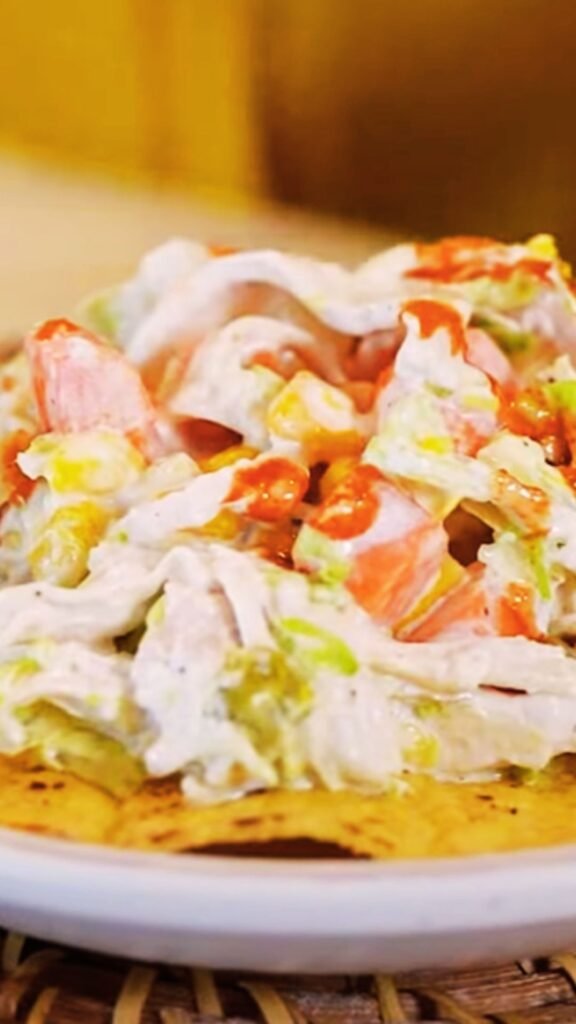
While I’m a proponent of honoring traditional recipes, I also appreciate thoughtful innovation. Over years of making this salad, I’ve developed some contemporary variations that respect the original while adding new dimensions:
Grilled Elements
Instead of poaching the chicken, try marinating boneless thighs in lime, garlic, and Mexican oregano, then grilling them. The smoky char adds incredible depth. While you’ve got the grill hot, throw on some corn and bell peppers too – grilled vegetables elevate this salad to new heights.
Tostada Presentation
For an elegant appetizer presentation, serve small portions of the salad atop crispy tostadas. Spread a thin layer of refried beans on the tostada first to prevent sogginess, then top with the salad, garnishes, and an extra drizzle of crema.
Vegetarian Version
Replace chicken with firm, pressed tofu that’s been marinated in chicken-flavored bouillon, lime juice, and spices, then roasted until chewy. Black beans make another excellent protein alternative, especially when seasoned with the same spices used in the dressing.
Nutrient-Dense Upgrades
For an even healthier version, I sometimes add:
- Finely shredded kale or cabbage for extra nutrients and crunch
- Cooked quinoa or amaranth for additional protein and texture
- Roasted sweet potato instead of white potato for more vitamins
- Hemp seeds along with or instead of pepitas for omega fatty acids
Creamy Avocado Dressing Variation
For a dairy-free version that maintains creaminess, blend the following:
- 1 ripe avocado
- 1/4 cup lime juice
- 2 tablespoons olive oil
- 1 small garlic clove
- Small handful of cilantro
- Salt and pepper to taste
- Water as needed to reach desired consistency
This makes a luxuriously smooth dressing that’s completely plant-based but feels indulgent.
Nutritional Benefits
One thing I love about Ensalada de Pollo is that it’s not just delicious – it’s also packed with nutrition. Here’s a breakdown of the health benefits from its key ingredients:
| Ingredient | Key Nutrients | Health Benefits |
|---|---|---|
| Chicken | Protein, B vitamins, selenium | Supports muscle maintenance, immune function, and energy production |
| Bell Peppers | Vitamins C & A, antioxidants | Boosts immunity, supports eye health, reduces inflammation |
| Carrots | Beta-carotene, fiber, potassium | Promotes eye health, aids digestion, supports heart function |
| Avocado | Healthy fats, potassium, folate | Supports heart health, improves nutrient absorption, benefits skin |
| Lime Juice | Vitamin C, antioxidants | Enhances iron absorption, supports immunity, aids digestion |
| Cilantro | Vitamins A, K, & C, antioxidants | Helps remove heavy metals, aids digestion, anti-inflammatory properties |
| Pumpkin Seeds | Magnesium, zinc, omega-3s | Supports heart health, immune function, and reproductive health |
| Tomatoes | Lycopene, vitamins C & K | Promotes heart health, reduces cancer risk, benefits skin |
A typical serving of Ensalada de Pollo provides a balanced meal with:
- Protein from the chicken
- Complex carbohydrates from potatoes and vegetables
- Healthy fats from avocado and olive oil
- Fiber from the variety of vegetables
- A wide range of vitamins and minerals
What I particularly appreciate is that this dish provides substantial nutrition without feeling heavy. It’s satisfying yet energizing – the kind of meal that nourishes without weighing you down.
Serving Suggestions

Ensalada de Pollo is wonderfully versatile when it comes to serving. Here are my favorite ways to enjoy it:
As a Main Course
- Served on a bed of crisp lettuce with warm corn tortillas on the side
- Stuffed into avocado halves for an impressive presentation
- Wrapped in large lettuce leaves for a fresh, low-carb option
- Paired with a cup of clear chicken consommé with lime and cilantro
As an Appetizer
- Served in small glass cups or mason jars for a party presentation
- Spooned onto cucumber rounds or endive leaves for elegant finger food
- Presented as a dip with tortilla chips or jicama sticks
- Arranged on a grazing board with other Mexican appetizers
Complementary Side Dishes
- Warm black beans with epazote
- Simple white rice with lime and cilantro
- Fresh mango or papaya slices
- Sliced jicama with chile and lime
Refreshing Beverage Pairings
- Agua fresca de jamaica (hibiscus tea)
- Horchata (rice drink with cinnamon)
- Fresh lime agua fresca with chia seeds
- Sparkling water with muddled cucumber and mint
Serving Temperature Notes
While traditional Ensalada de Pollo is served chilled, I find it most flavorful when removed from the refrigerator about 15-20 minutes before serving. This takes the edge off the cold and allows the flavors to bloom. The exception is on very hot days, when serving it directly from the refrigerator provides welcome relief.
Storage and Make-Ahead Tips
One of the practical benefits of Ensalada de Pollo is that it can be prepared in advance, making it perfect for meal prep or entertaining. Here are my tested storage recommendations:
Prepare-Ahead Strategy
For the freshest result when making ahead:
- Cook the chicken and vegetables a day in advance and refrigerate separately.
- Make the dressing and store in a separate container.
- Dice tomatoes, avocado, and any garnishes the day of serving.
- Combine all elements 30-60 minutes before serving time.
If You Must Store the Assembled Salad
If you need to store fully assembled salad (minus avocado):
- Store in an airtight container in the refrigerator for up to 2 days.
- Place a piece of plastic wrap directly on the surface to prevent oxidation.
- Add fresh avocado and garnishes just before serving.
- You may need to brighten with a squeeze of fresh lime juice when serving.
Freezing Components (Not Recommended for Full Salad)
While I don’t recommend freezing the assembled salad, you can freeze components:
- Cooked, shredded chicken freezes well for up to 3 months.
- Blanched vegetables like carrots, corn, and peas can be frozen separately.
- Thaw in the refrigerator overnight before assembling your salad.
Common Questions and Answers
Q: Can I use leftover rotisserie chicken for this recipe?
Absolutely! Rotisserie chicken works wonderfully in this salad and adds a nice roasted flavor. Just be sure to remove the skin and shred or dice the meat to the appropriate size.
Q: Is there a way to make this recipe dairy-free?
Yes, you can make a dairy-free version by replacing the Mexican crema or sour cream with a plant-based alternative. Coconut yogurt works well, or you can use the avocado-based dressing I mentioned in the modern twists section. Skip the Cotija cheese or replace with a sprinkle of nutritional yeast for a cheesy flavor.
Q: How spicy is traditional Ensalada de Pollo?
Traditional versions vary in spiciness depending on the region and family recipe. My recipe is mild to medium with the option to add jalapeños. You can adjust the heat level by changing the amount of jalapeño or substituting milder poblano peppers.
Q: Can I prepare this salad the day before serving?
Yes, with some modifications. Prepare all ingredients and the dressing separately, storing them in the refrigerator. Combine everything except the avocado and garnishes a few hours before serving. Add the avocado and garnishes just before serving to maintain freshness and prevent browning.
Q: What can I substitute for Mexican oregano if I can’t find it?
Regular Mediterranean oregano can work in a pinch, but the flavor is different. Mexican oregano has citrusy, earthy notes. A closer substitute would be a mixture of regular oregano with a pinch of marjoram and a tiny bit of ground coriander to approximate the flavor profile.
Q: Is this recipe gluten-free?
Yes, traditional Ensalada de Pollo is naturally gluten-free. Just be cautious with store-bought dressings or seasonings if you’re adapting the recipe, as these sometimes contain hidden gluten.
Q: How do I prevent the avocado from turning brown in leftovers?
It’s best to add avocado only to the portion you’ll be eating immediately. For leftovers, add fresh avocado just before serving. If you must store salad with avocado, place plastic wrap directly on the surface of the salad to minimize air exposure, which causes browning.
Q: Can this recipe be adapted for a large crowd?
Definitely! This recipe scales up beautifully for parties and gatherings. For a crowd of 20, I’d recommend about 5-6 pounds of chicken and proportionally increased vegetables and dressing. Prepare components ahead and assemble shortly before serving.
Final Thoughts
Ensalada de Pollo is more than just a salad – it’s a vibrant expression of Mexican culinary creativity and resourcefulness. What I love most about this dish is its perfect balance: protein-rich yet light, creamy yet fresh, traditional yet adaptable.
When I make this salad, I’m reminded of that first taste in Oaxaca – the surprise and delight of discovering something so familiar (chicken salad) transformed into something entirely new through the lens of Mexican flavors. It’s this transformation that makes cooking so magical.
Whether you follow my traditional recipe or experiment with modern adaptations, I hope this Ensalada de Pollo brings the same joy to your table that it has to mine. Remember that the best dishes come from cooking with attention and care – notice how the lime juice brightens, how the herbs bring freshness, how each vegetable contributes its own texture and flavor.
Most importantly, share this dish with people you care about. In Mexico, food is always about community, and few dishes embody that spirit better than this colorful, abundant salad that’s meant to be passed around a table filled with conversation and laughter.
¡Buen provecho!
